What is Cloud Migration Process? What are the mistakes to avoid while shifting to Cloud Migration?
What is the Cloud Migration Process?
The process of transferring data, apps, and other business components to a cloud computing environment is known as cloud migration. There are several kinds of cloud migrations that a business might undertake. Data and apps can be moved from a nearby on-premises data center to the public cloud using one popular model. Cloud-to-cloud migration, on the other hand, refers to the process of migrating data and apps from one cloud platform or provider to another. Reverse cloud migration is a third sort of cloud migration when apps or data are moved back to a local data center from the cloud.
Phases of Cloud Migration
1. Assessment Phase
This initial phase involves evaluating the existing resources, performance metrics, and the cost-effectiveness of the migration. This assessment helps in defining the scope and strategy for migration.
Download Free 90+ Tally Shortcut Keys
2. Planning Phase
businesses need to prepare the migration process, which includes deciding on the best cloud provider, figuring out the architecture, and creating a schedule. Determining the security precautions required for the move is another task for the planning stage.
3. Migration Phase
During this execution phase, data, apps, and other business components are migrated to the cloud with Tally Solutions. Depending on the business strategy, this migration might be conducted all at once or in phases.
4. Testing Phase
testing the new cloud environment is essential after migration to make sure everything is functioning as it should. To ensure compliance with all requirements, performance and security tests are included.
5. Optimization Phase:
Making the necessary modifications to optimize the system for improved performance and cost-effectiveness is the last step. The necessity for this constant optimization increases as company requirements change and technology develops.
Common Mistakes to Avoid in Cloud Migration
1. Lack of a Clear Strategy
Starting a migration without a well-defined plan is a basic mistake that can result in failure deployment, extended downtime, and higher expenses.
2. Underestimating Security and Compliance Needs
If the security implications of transferring data to the cloud are disregarded, there may be serious data breaches and regulatory noncompliance.
3. Inadequate Testing
Avoiding comprehensive testing can lead to unexpected issues after the migration that affects corporate operations.
4. Ignoring Employee Training
Operating inefficiencies and insufficient use of cloud capabilities might result from staff members who are not prepared for the cloud environment.
5. Failing to Optimize Post-Migration
Many organizations miss the opportunity to optimize resources once the migration is complete. Continuous optimization is necessary to take full advantage of cloud technology features.
Conclusion
Cloud migration is a significant step for any business looking to improve efficiency and scalability. It offers numerous benefits, including cost efficiency, better performance, and enhanced flexibility. But you must handle this process methodically. Avoiding common mistakes and following a structured migration plan can help ensure a smooth transition to the cloud, allowing businesses to maximize their cloud investments.
Businesses can buy Tally Cloud solutions from a reliable service provider like Tallystack.To know more about Tally on cloud or register for a free demo visit Tallystack.
Frequently Asked Questions
Q.1 What are the primary benefits of migrating to the cloud?
Cloud migration offers flexibility, scalability, enhanced collaboration, better disaster recovery, and potential cost savings due to reduced hardware and maintenance expenses.
Q.2 How long does the cloud migration process take?
The duration of cloud migration can vary greatly depending on the scale of the migration, the complexity of the applications, and the preparedness of the business. It can take anywhere from a few weeks to several months.
Q.3 How can I choose the right cloud provider?
Consider factors such as the provider’s reliability, security features, compliance with relevant regulations, the scalability options they offer, and their support structure.
Q.4 What is cloud-to-cloud migration?
Cloud-to-cloud migration involves moving data and applications from one cloud platform to another. This may be done to take advantage of better pricing, features, or data sovereignty offered by another provider.
Q.5 Can cloud migration impact business operations?
If not managed carefully, cloud migration can cause disruptions. Planning the migration in phases, performing extensive testing, and involving stakeholders early can mitigate operational impacts.


